what does it take to make a pro touring car
What is Pro Touring?
Pro Touring is a hot rod term born out of the ninety's. It refers to any car or truck that has been modified in multiple areas to perform improve than it did stock or from the factory. Pro Touring builds washed correctly will encounter or exceed modernistic day, OEM operation vehicles in the following areas of operation: Suspension, Steering, Brakes, Tires and Engine modifications. These 5 areas are the primary focuses for a pro touring car or truck build.
What upgrades are needed to build a Pro Touring car or truck?
Suspension
Suspension is 1 element that separates a pro touring build from whatever other build. Let's accept a 1969 Chevelle as an example car for updating the suspension for pro touring. Depending on your budget and skill level, in that location are several ways y'all could go to update the suspension on a 69' Chevelle. Lowering the car'due south center of gravity in combination with irresolute spring rates and upgrading to tuned shocks will drastically touch how a Chevelle handles on the street, autocross or track day upshot. Upgrading shocks and springs with swaybars or updating to coilovers with sway bars are two ways to lower your heart of gravity and stiffen upward your suspension for improved treatment on a pro touring build.
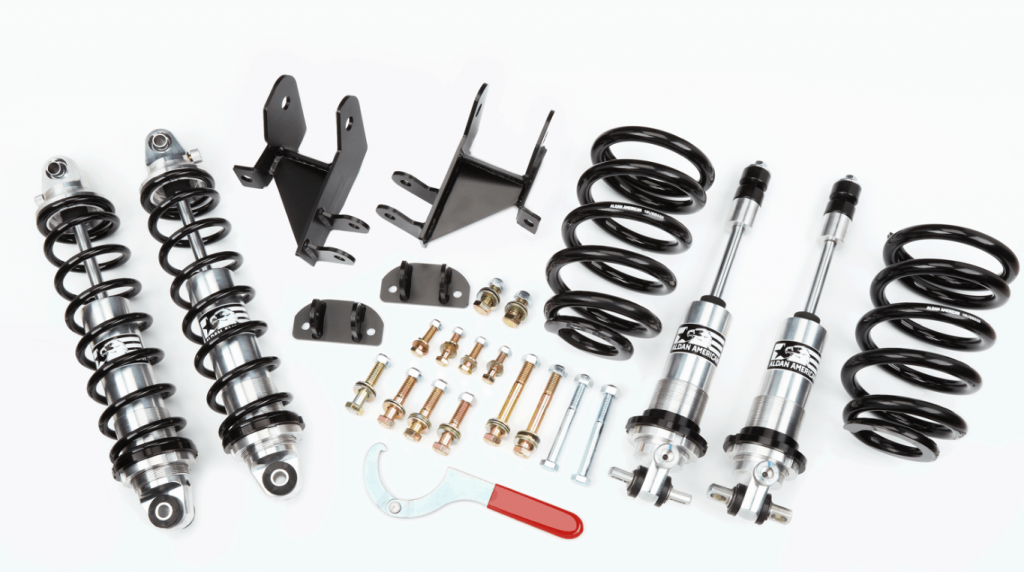
Upgrading OEM command arms to aftermarket command arms does many things to the break every bit well. Aftermarket control artillery are usually lighter and stronger than OEM. The boosted strength in a skillful control arm volition reduce flex and fatigue which is great for hard cornering. Aftermarket command artillery can too provide greater turning and better geometry than OEM control arms. Aftermarket control arms can also permit you to run aftermarket shocks, coilovers, drop spindles and larger brakes – All elements of a true Pro Touring chassis.

Swaybars are one of the most cost effective ways to stiffen upwardly a chassis and reduce body roll when cornering at speed. On the other side of the budget is going to a full custom chassis. Depending on the quotient of your build and the components you lot're planning on running, a total custom chassis or complete IFS kit may be a cost savings in the long run (All depends on what level you're looking to take your build to).
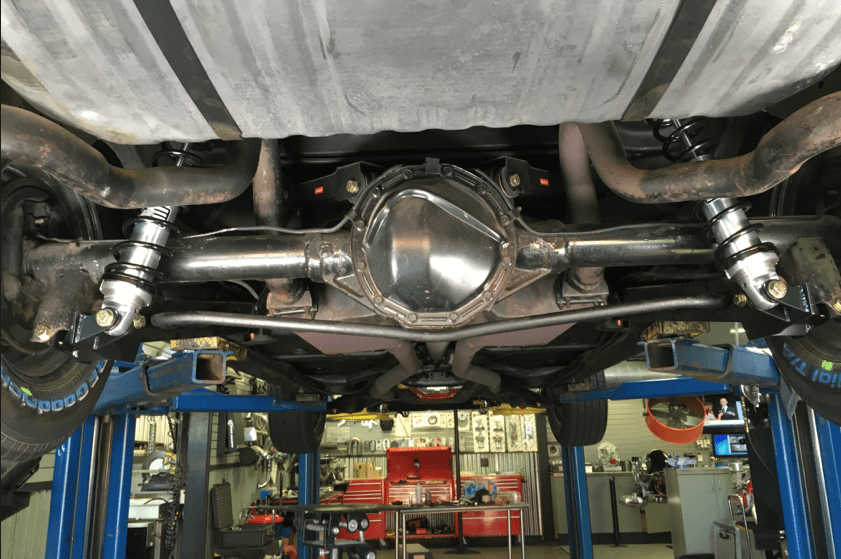
Steering
If you compare an old subcontract truck to a new Mustang 1 thing yous'd find immediately is the steering and how easy and effortless it is to plow the steering cycle in a newer Mustang. Information technology'due south easier in the new Mustang because from the factory, these cars come with power assist rack & pinion steering units. The power racks assist push fluid through the system to assist in moving the pinion gear on the rack as your turn the wheel. The old farm truck without a power rack & pinion steering setup is going to steer like a tractor at low speed (multiple turns to become the wheels to react to your efforts of turning the wheel) and will take a lot more effort to steer than a car with a ability rack and pinion steering setup.

On your pro touring build, improving the steering is key to go on up with higher horsepower and modified pause. You want your steering to be more responsive and smoother as your turning larger wheels and tires on your pro touring build. Power rack & pinions and IFS or custom chassis that included rack & pinion setups are key to rounding out your build.
Brakes
Pro touring builds are known for big brakes. What is the importance of those brake reservoirs and behemothic rotors and brake calipers? If you lot take drum brakes, one-time OEM disc brakes, large wheels/tires or your adding more than horsepower to your build – you lot've got to be able to terminate.

From the factory, classic muscle cars and trucks almost always had drum brakes in the rear and often times up front. If y'all've always driven a car or truck with pulsate brakes on all 4 corners, y'all know how stopping ability is reduced as the drums heat up. Upgrading to 20" wheels and dropping a 600 hp built LS3 into a musculus car designed to handle 300 hp is cool, but y'all have to be able to boring all that horsepower down. There are many aftermarket restriction manufacturers out at that place that specialize in pro touring brake setups that fit OEM axles and spindles. Custom chassis, IFS kits and aftermarket control artillery are usually designed to adapt larger disc brakes which are perfect for pro touring builds.
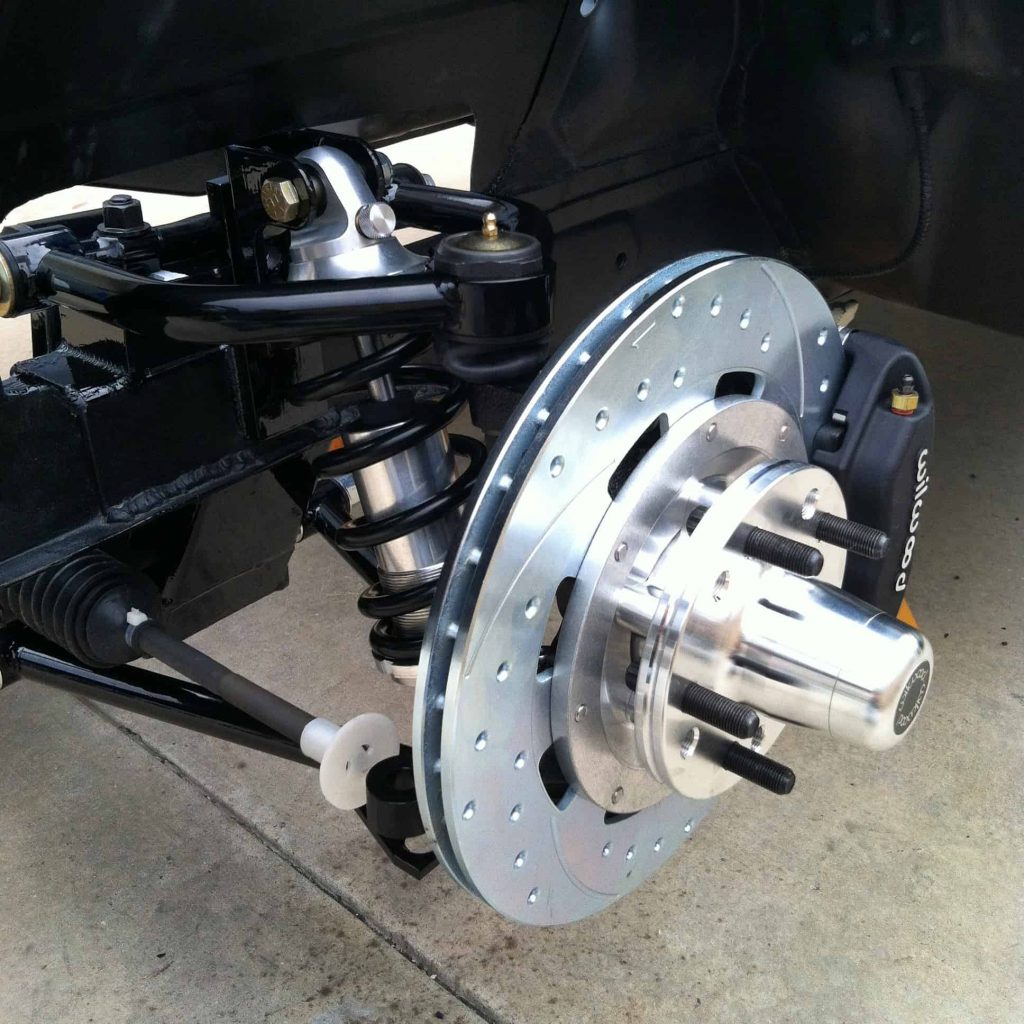
Wheels & Tires
15" rallye wheels with redline tires expect great. On a pro touring build most people want to have high horsepower, big brakes and a tuned suspension that's totally lowered the vehicle and eliminated any and all fender gap. To set up the ride-top off and make the look of a pro touring auto or truck comes a decent gear up of wheels and tires.
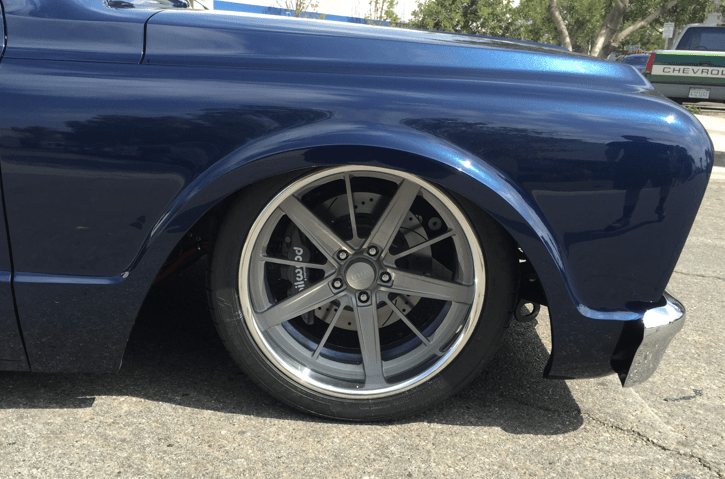
On a pro touring build one of the main reasons you'd upgrade to a 18" or 20" set of wheels is for the fact that yes it looks cool, merely more so for the fact that you're running larger disc brakes and calipers to stop your built, high horsepower engine. Backspacing is cardinal on your new wheels. Make sure you mensurate your makspacing then you can articulate your new brakes. Going wide on wheels is benign because it will put more tire expanse to the pavement. More than tire surface area will amend grip and offer better traction and overall treatment when setup correctly.
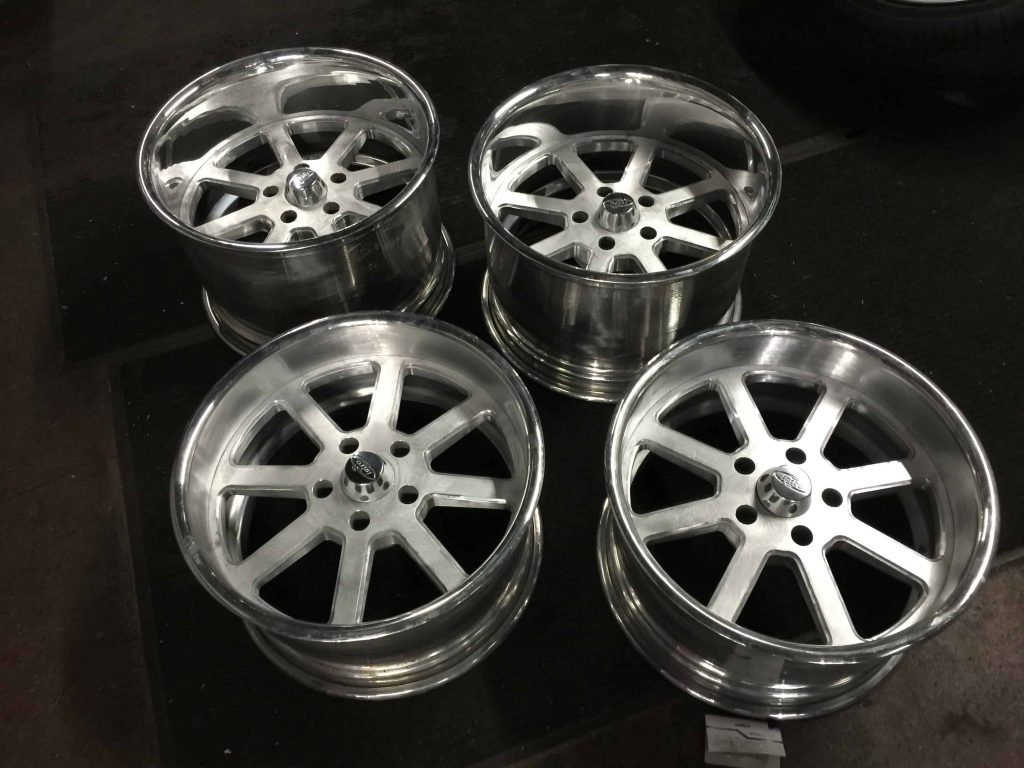
When it comes to tires, tire manufacturers take been developing tire compounds specifically designed for the pro touring and car cross markets. A practiced pro touring tire has grooves for weather on long distance drives, potent side walls for hard cornering and a rubber compound that is designed for street/track utilise. Low contour tires are a popular choice for pro touring builds as they evangelize a great look past assuasive larger wheels to be ran which sets off the overall opinion of the vehicle. Low profile tires volition permit one to run larger wheels and truly eliminate the fender gap classic muscle cars are known for.

Engine Operation
Updating the engine in a archetype automobile or truck is often times the goad for a pro touring build existence born. When older engines die and if the vehicle isn't a numbers matching 1 of one build – Owners will pull the old V6 or V8 and go downwardly the path of putting a late model engine similar an LS or Coyote swap in their beloved classic. At that place'due south so many great parts and technology currently available for engine swaps that it's easier than always to remove an erstwhile 300hp 350 modest block and replace it with a late model engine that gets 20+ MPG, can run A/C and deliver 650hp+ with minimum bolt ons. (HP, MPG and A/C are all elements of a true pro touring build – Remember street, race and cross land cruises).
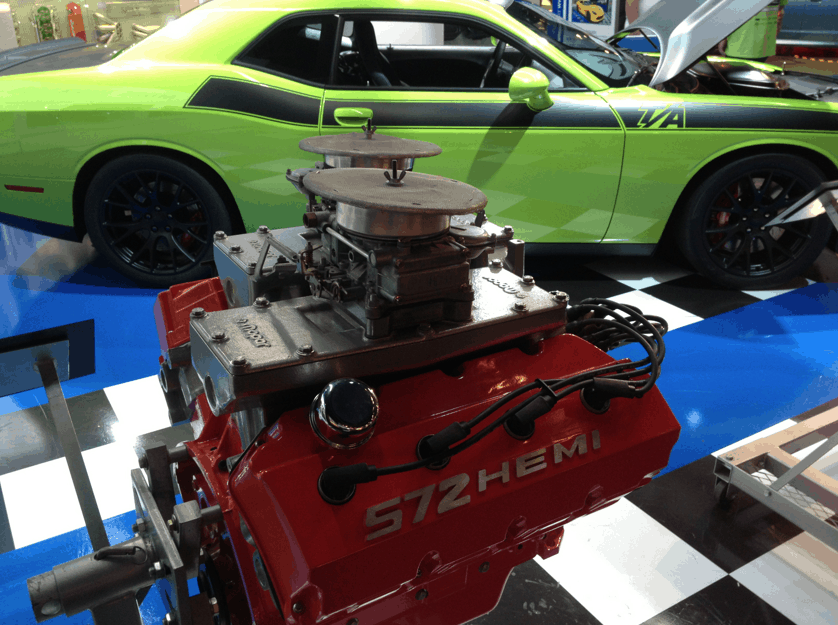
Big horsepower ways you're going to need to update your suspension, brakes, wheels and tires to accommodate this mod powertrain in your classic car or truck.
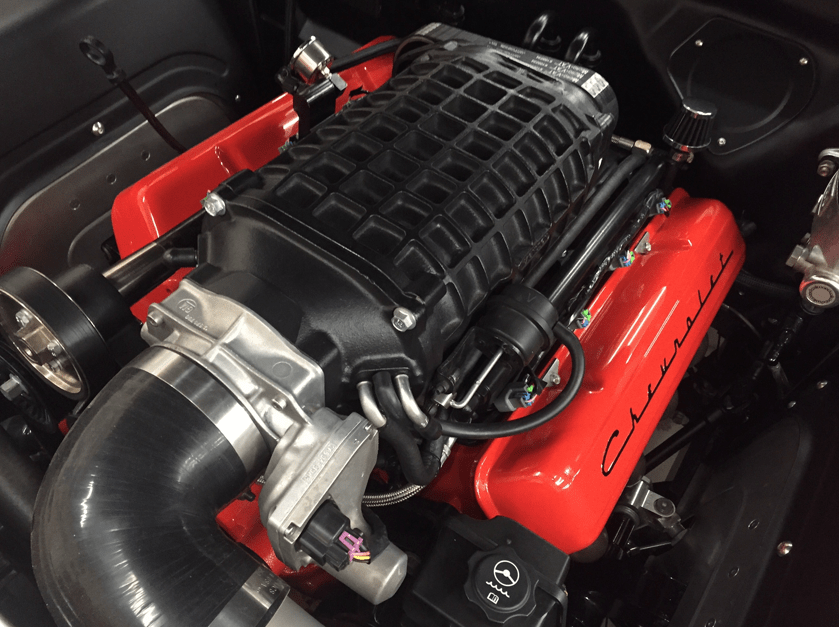
Wherever you lot make up one's mind to brainstorm, pro touring builds are a smash. Having a well rounded, tactical classic that offers late model creature comforts with a timeless wait and way is something that makes pro touring style builds what they are today.
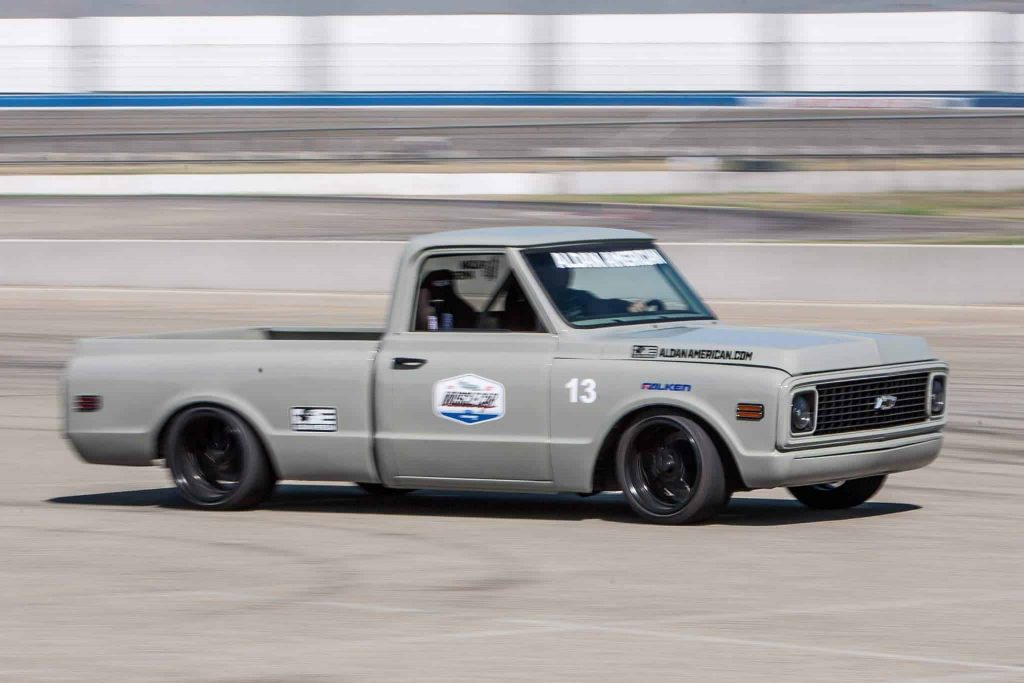
As a term coined in the 90's, the pro touring motion is all the same alive and well today.
For pro touring suspension help, check out our total line of products and solutions here
Source: https://aldanamerican.com/blog/what-is-pro-touring/
0 Response to "what does it take to make a pro touring car"
Post a Comment